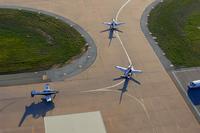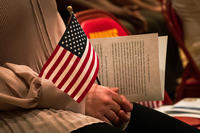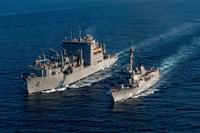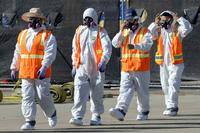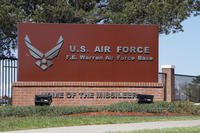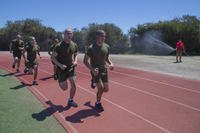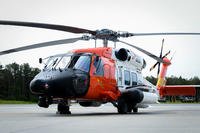KANDAHAR AIRFIELD, Afghanistan -- Humanitarian aid missions conjure up images of Airmen air-dropping supplies to austere locations too hazardous to deliver by trucks or convoy. Images of smiling villagers eagerly awaiting much needed vittles and supplies. But not all "HA" missions in Afghanistan require airlift; some require simply putting rubber to road and heading out to the location.
However, there's nothing simple about it.
Airmen assigned here headed out recently on a short trip "outside the wire" to deliver much needed school supplies, weather fortification equipment, and grains and rice to a nearby village as part of the ongoing effort by U.S. Forces to support counter insurgency operations and foster goodwill amongst the Afghan people.
"This is one opportunity we have to show our Afghan friends that we want to support and help them in whatever way we can," said the special agent in charge of the mission, whose identity is being withheld for security reasons. "We don't get to come out here and do missions like this often, so when we do, we really want to make the best of it."
After arriving at the village, the four Cougar mine resistant ambush protected vehicles carrying 5,000 pounds of supplies were greeted by nearly two dozen Afghan children and a dozen other villagers eager to shake the hands of the U.S. servicemen and women and see what the convoy had in tow.
"The people here are tired of war," said one village elder, through a translator. "The people here have been at war in one form or another for 30 years. It's wonderful to see the U.S. forces care about our people and our villages and see how they support our livelihood."
Though the trip was humanitarian, the preparation for the operation maintained the same level of preparation and security that is expected of all missions outside the safety and security of Kandahar Airfield's fortifications.
"We put together the mission plan a few weeks ago, and that of course has to be routed through the chain of command to endorse the operation," said the agent. "Every time we go outside the wire, whether for 'H.A.' or not, we have to ensure all research, safety and security measures are maintained to the highest level."
This band of Airmen, have been on more than 35 missions together, and they all start, and if all goes well, end the same way.
"After we receive the approval of the plan from leadership we finalize the details," the agent said. "When the day of the mission arrives, we run through everything beforehand, all of the possible contingencies, and how we'll respond."
World-class athletes in sports like the National Basketball Association and the National Football League routinely perform dry-runs and run-throughs on the days prior to a major event like the NBA Finals, or the NFL Super Bowl. This team is no different.
"We do this for every mission, no matter how big or how small, no matter the objective," said the agent in charge. "For us, every time we step outside these walls, it's game time. We go over everything time and again, and now that we've been doing this together for so long ... it's literally second nature, it's instinct. I can tell you who's going to be where no matter what the situation is. It's amazing having that kind of trust in your team."
Fortunate for everyone, the humanitarian mission needed no such response from the team. During the convoy out to the village, several stops were made to identify, tag, and notify headquarters of issues outside of the norm, turning what may have been a normal 20 minute drive down any highway in America into an hour-long expedition.
While the stakes are high in delivering aid to the villagers, it's not without its rewards. The village's children, adolescents and elders all gathered around to see what the American's had brought and even provided food to the Airmen. The trick of course when interacting with other cultures is to remember to recognize their customs and courtesies. "We're used to doing things a certain way in the States," said a senior agent. "Here, the relationships you make are sometimes more important than the stuff you bring. Even having tea or eating with them goes a long way to strengthening our relationships.
"Don't turn away food if you can help it, they'll take it as a sign of disrespect, and when you eat, try to remember to use your right hand," he laughed.
And after the food is eaten, the tea is drunk; the Airmen secure their empty trailers, load up into their MRAPs and head back to Kandahar Airfield. Rolling through the secure gates, inside the walls of Kandahar, they remove their Kevlar helmets, tuck away their tactical gear and return to their compound. There, they debrief how the mission went, address any issues that were out of the ordinary and gather together like a sports team after the final buzzer sounds.
In a circle, every Airman's hand reaches for the center and on the count of "1, 2, 3," they throw their hands up in celebration of a safe end to a successful mission.

